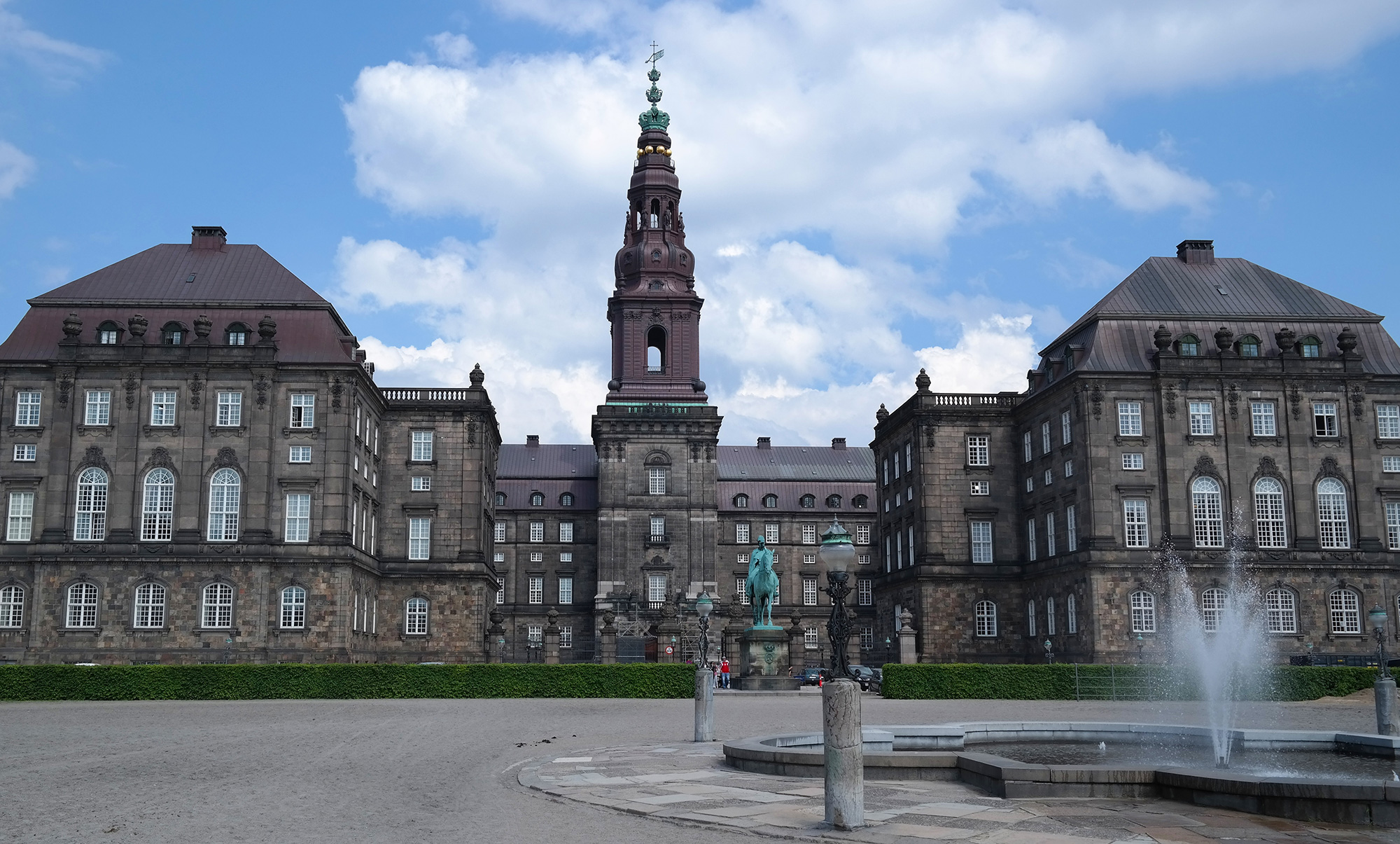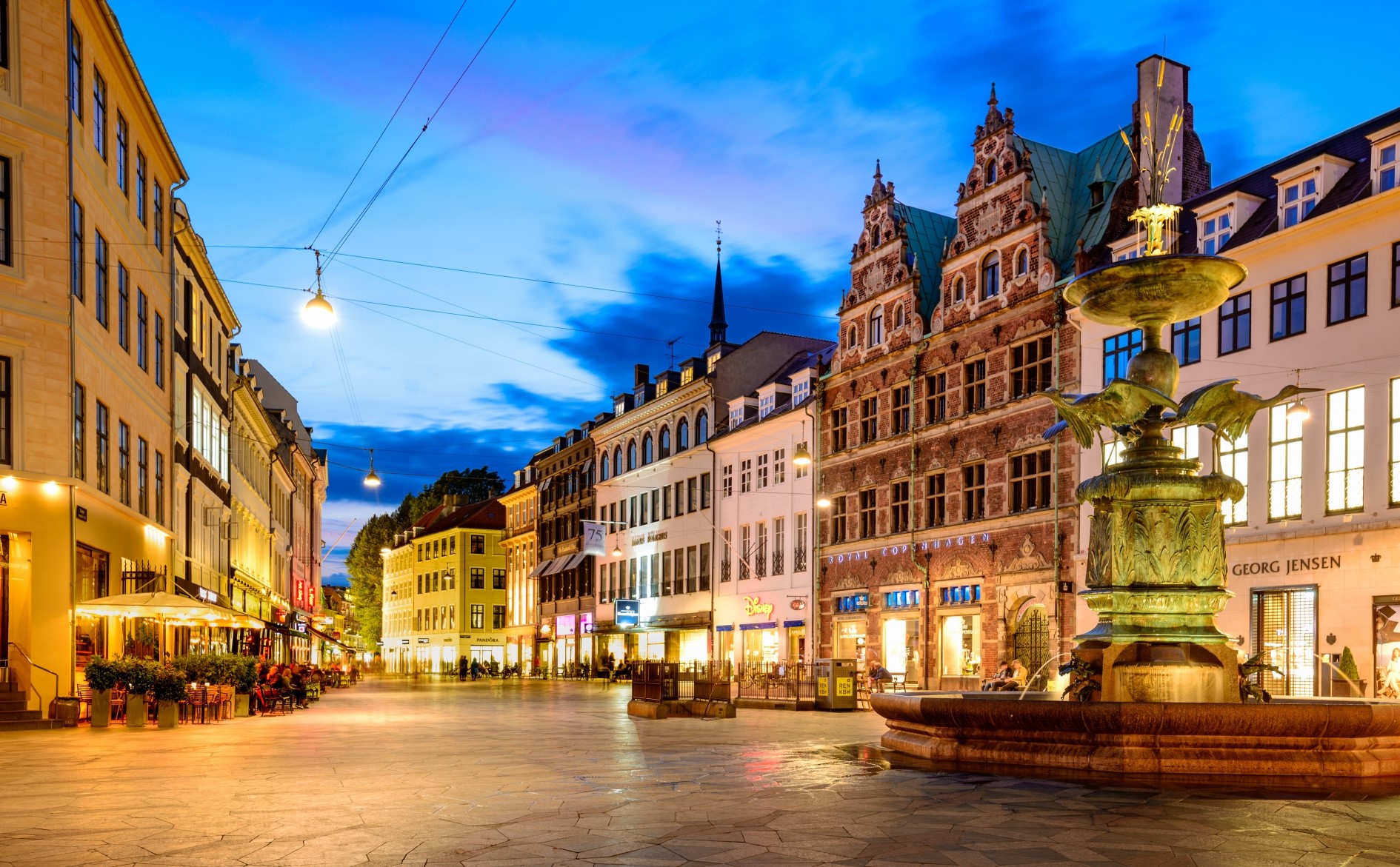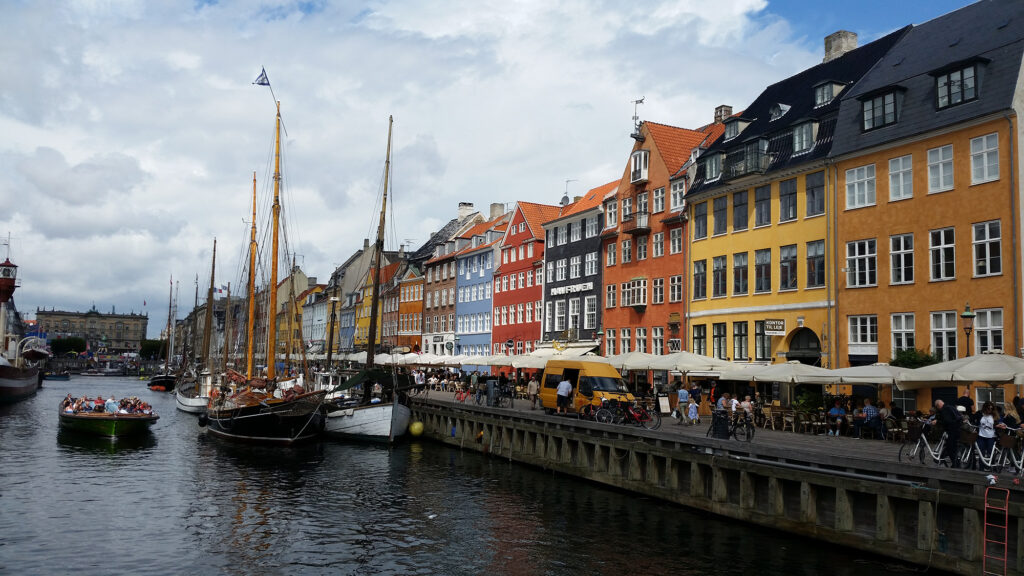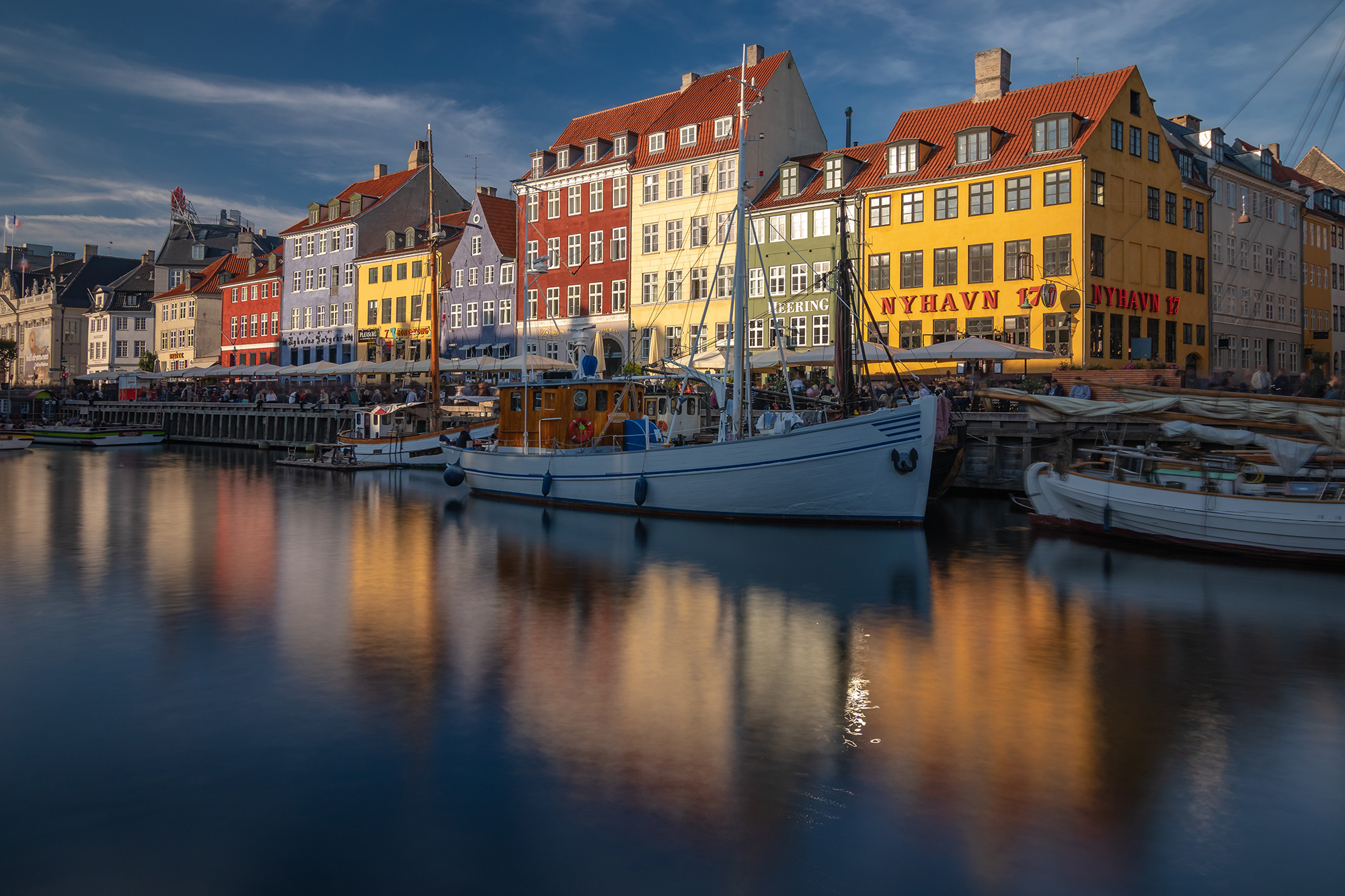Table of Contents
About
Copenhagen is the capital as well as the largest city in Denmark. Situated on the coastal islands of Amager and Zealand, Copenhagen is linked to Southern Sweden by the Oresund Bridge and is part of the Nordic Countries of Northern Europe and the Scandinavian Culture. Since the 21st century, Copenhagen city has been the cultural, urban, and economic development center of Denmark. The city comprises the rococo district of the 18th century, Frederiksstaden, and is home to the Amalienborg Palace and the Rosenborg palace of the royal families.
The original Danish name of the city symbolizes the merchant’s harbor, and by the German translation, it became that Copenhagen itself defines a captivating history. While maintaining the antiquity, the city incorporates parks, waterfronts, promenades, restaurants, and other tourist attractions. The city also houses the Technical University of Denmark, University of Copenhagen, and other renowned educational institutes. Copenhagen is a unique city with enthralling history, upholding culture, happy locals, and a compelling economy. It is the happiest city in the world as it offers free college tuition, shorter workdays, different levels of individual interactions, and more vacations.
History & Culture
A walk through the impressive and the most captivating city in Denmark, Copenhagen is a walk through history as the city is brimming with the blend of new and old. Since the 12th century, Copenhagen city grew its importance by coming into the possession of Bishop Absalon and became the capital city of Denmark in 1445. The excellent conditions for fishing had grown the city into an essential trading center even after being attacked frequently by the Hanseatic League.
In the late 16th century, the city got enlarged under the Christian IV of Denmark that leads to the construction of new districts, new buildings, and churches, becoming a famous tourist destination. The city had also sustained war with Sweden but now serves as the cultural hub of Scandinavia and Denmark. It is a metropolitan city with tourist appeal as Amsterdam as well as Barcelona. Families as well as solo travelers and backpackers regularly visit this city. Copenhagen incorporates the Danish architecture and consists of a variety of cultural activities as museums, literature, and entertainment as well as performing arts, cuisine, nightlife, festival, and amusement parks.
Things To Do in Copenhagen
The Rosenborg Castle

Rosenborg Castle is a royal palace built in the early 16th century, in the Dutch Renaissance style by Christian IV, the best known Scandinavian king for his long reign. The castle contains a long hall, the Royal reception room on its third floor that was originally the ballroom but later came to known as the Knight’s Hall, gardens, workspace, and other rooms. The interior of this extravagant royal palace has not changed for centuries and features a stucco ceiling, silver furniture, Venetian glasses, flora Danica dinnerware, and the Danish coat of arms. The most captivating item of the castle is the coronation chair of the kings and queens that are encrusted with the silver lions in its front. Besides, the castle houses a museum, which exhibits the historic tapestries, charts of conflicts between Sweden and Denmark, Danish culture artifacts, crown jewels including the Danish Crown Regalia, and other historic facts. Today, the castle is a tourist attraction that allows visitors to explore it to the fullest by following an audio guide. Visitors who put Rosenborg Castle on their itinerary should be prepared to pay an entrance fee of 120 DKK (ca. 19 USD).
The Christiansborg Palace

Situated on the Islet of Slotsholmen, The Christiansborg Palace in Copenhagen is the government building of Denmark. The castle comprises the Danish parliament, the prime minister of Danish’s office, and Denmark’s supreme court. Also, the palace is home to the supreme powers of Denmark – the executive power, judicial power, and the legislative power.The castle’s name, Christansborg is used for the Danish political system – the Metonymy – and is known as the Rigsborgen or Borgen. Today, the castle incorporates the Danish architecture in the historic Neo-Baroque style and is divided from the middle featuring the southern as well as the northern wing. The castle also emphasizes the richly adorned royal reception rooms on its first floor with furniture and work of arts, the tower hall that features the tapestries, the palace square – the oval throne room featuring the credentials of the Queen Margrethe II -, the Alexander Hall, and the ornate great hall of about 40-meter with 400 guests seating, that is used for receptions, state dinners, etc.
At last, the castle offers towers, a chapel, theater, and gardens for visitors to see. Entrance tickets vary depending on the parts of the castle you want to visit. An all-inclusive ticket costs 160 DKK (ca. 25,50 USD).
The Tivoli Gardens

Tivoli Gardens is an amusement park as well as the second-oldest operating park in Copenhagen city, Denmark. The park was commissioned on the 15th of August 1843 and now has become the second-most popular theme garden in the world and the fifth most-visited in Europe. Located next to the central railway station in the downtown of Copenhagen, the Tivoli gardens were earlier known as the Tivoli & Vauxhall. The Tivoli was implying to the Jardin de Tivoli in Paris and Vauxhall to the London’s Vauxhall Gardens. Since its construction, the Tivoli gardens incorporate exotic style buildings, a theatre, restaurants, cafés, flower gardens, and bandstands. The gardens offer mechanical rides, including the oldest wooden roller coaster – the Demon roller coaster – featuring the vertical as well as the Immelmann loop.
Apart, the gardens also incorporate the swing ride Vertigo, which is a looping plane ride, a Zamperla Air race ride named Aquila, and a Fata morgana – the condor 2GH.People who are looking for action when visiting Copenhagen should put the Tivoli Gardens on their travel itinerary. The entrance ticket costs 135 DKK (ca. 21,50 USD). However, rides have to be purchased individually.
Strøget Shopping Street

Strøget is the longest pedestrian street in entire Europe and Copenhagen. It offers high-end shopping and is the most-visited tourist destination in Copenhagen. Stroget street comprises several malls, including one of the world’s largest pedestrian malls that incorporates independent shops.The street is a car-free zone that extends over a mile covering the heart of Copenhagen and featuring endless shops as well as boutiques. The street allows visitors to walk on the narrow sides, enjoy the restaurants around, and the nightlife of Copenhagen. From here visitors can also walk to the old city. On top of this, the street also offers historic town squares, a special business environment, traditional Danish dinner, theaters, the Royal Guard march to Rosenborg Castle, and more. The most interesting feature of this street is the statue of the world’s tallest man at the entrance.
Nyhavn District

The 17th-century waterfront and a small ship port named Nyhavn is a historic, the most captivating, and the most picturesque tourist destination in Copenhagen. Situated in the center of the city, Nyhavn extends from the Kongens Nytorv to the Harbourfront from the south of the Royal Playhouse. Nyhavn was commissioned by the Christian V king and was later dug by Swedish prisoners from the Dano-Swedish war. Today, the entertainment district, Nyhavn is a gateway to the old inner city at king’s square and is surrounded by the 17th and 18th centuries canals, cafés, restaurants, and colorful townhouses.
Nyhavn features the impressive memorial anchor at its end, which is a monument that commemorates over 1700 Danish officers, sailors in Navy service, allied force officers, and other martyrs who sacrificed their lives during the second world war. The place also features cafés, bars, outdoor seating, and more on the first floor of the ancient buildings made of wood, plaster, and bricks. Also, it allows visitors to snap pictures on the boats while exploring the city. From Nyhavn, you can also walk to the little mermaid statue, which takes around 20 minutes. The statue is based on a fairy tale by the Danish author Hans Christian Andersen. Despite the small size, this is one of the most visited monuments in Copenhagen.
How to get to Copenhagen
By Air – Flying is the most popular way to travel to Copenhagen. Many airlines offer flights to Kastrup Airport in Copenhagen. Within Europe, there are usually direct flights available. Alternatively, visitors can fly to a different airport in Denmark and take a connecting flight from there.
By Rail – As Copenhagen has an efficient transportation system, it is connected by rail to all the cities in Europe or Denmark.
By Bus – Flixbus offers daily bus transfers from Denmark’s second-largest city Århus to Copenhagen. Prices start as low as 16 Euros and the road trip takes around 3,5 hours. From Copenhagen’s nearest city Malmö in Sweden, Flixbus offers tickets for as low as five Euros. The ride from Malmö only takes around one hour.
